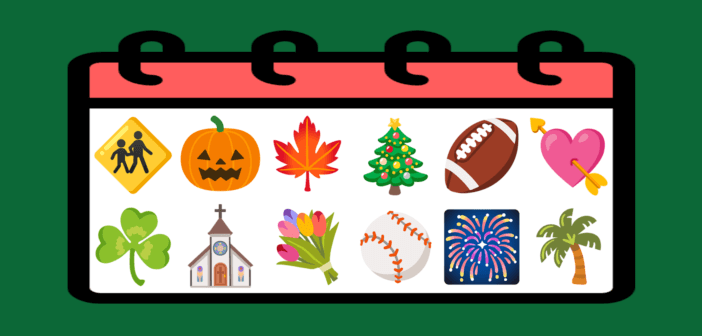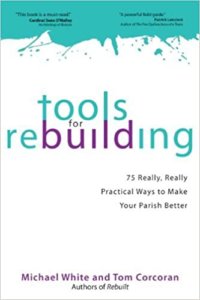Michael White and Tom Corcoran say people in your community are influenced less by the liturgical season and more by cultural seasons that define the rhythms of their lives. Church leaders need to understand how the school calendar, recreational activities, major sporting events, and secular holidays shape church attendance and where people are emotionally and intellectually.
It is definitely an advantage to be able to rely on the liturgical year, week after week, and shape worship and preaching around it, as well as provide the appropriate seasonal music. But while the liturgical seasons resonate with us insider church people, they do not necessarily do so with the average parishioner, much less the unchurched person who might be coming through your front door for the first time.
However, they are living in cultural seasons that, to some degree, parallel or at least complement the seasons of the church’s year. Your church and your weekend experience need to be in sync with those seasons because they shape where the people in the pews are emotionally and also intellectually.
The culture where you serve might be different, so let us make the disclaimer that we are talking about an East Coast, mid-Atlantic, middle-class kind of culture. Here in Timonium, Maryland, the seasons pretty much run as follows:
Back to school: Labor Day weekend through the weekend before Thanksgiving
This is the “new year” in our culture; everyone returns to regular schedules, school starts, kids’ sports programs get underway (soccer and football), and the NFL is back on Sundays. Halloween is a huge deal for families with little kids and for young adults. It’s the usual time to get kids and students into our programs, and we see a big bump in attendance.
Christmas: The weekend after Thanksgiving through Christmas
More kids’ sports programs get in the way of everything else (basketball, hockey, and indoor soccer). Schedules are more than overflowing with shopping, decorating, entertaining, and travel. And yet, this is a season in which people are interested in coming to church and very likely to invite unchurched friends to come with them. Our attendance will continue to climb here and we can definitely expect increased giving.
Winter/Early Spring: The weekend following New Year’s Day through the fifth Sunday of Lent
The kids’ sports that started before Christmas are still going strong. This season is marked by Super Bowl, Valentine’s Day, and St. Patrick’s Day, and, in our community at least, one long weekend away at some point for sun or skiing. This is usually a good time of year to sign people up for ministry and small groups. It seems people are more willing to listen, get involved, and try new things during this period. We have come to call this period “our time.”
Spring/Late Spring: Palm Sunday through the weekend before Memorial Day
Easter and Mother’s Day, of course, are the big days (for brunch), and more kids’ sports programs are blossoming (lacrosse and baseball). This is a time of transitions: First Communions, Confirmations, graduations, weddings. This is the season to sign volunteers up for the fall.
Summer: Memorial Day weekend through the weekend before Labor Day
This is a time marked by Father’s Day (not nearly as important as Mother’s Day), the Fourth of July, and, especially in July, pervasive summer vacations. During this season, we can expect to see weekend attendance drop by a third or more, but this is also a time when people who are church shopping often go shopping. There is a very relaxed feel that settles over our community; people come to church dressed very casually. For our staff, this is the season of preparation for the year ahead. Any capital improvements on campus happen now, too.
Those might not be the seasons in which your congregation lives, but your members definitely live their lives in cultural seasons. You should know your congregation’s seasons, and those seasons should be reflected in your weekend homily and music. These seasons might determine other elements of the experience as well, like altar decorations of after-church fellowship.
Scripture says there is a season for everything, a proper time for everything under heaven. Doing more successful ministry means knowing which season you’re currently in or which season current events have unexpectedly created for you. Know and honor those seasons.
Excerpted from Tools for Rebuilding: 75 Really, Really Practical Ways to Make Your Parish Better (Ave Maria Press: 2013) by Michael White and Tom Corcoran. The book is available at Ave Maria Press and Amazon. Used by permission.
Related Resources
- Building Attendance through Special Focus Sundays by Lovett H. Weems Jr. and Tom Berlin
- 50 Ways to Increase Worship Attendance, a free resource from the Lewis Center
- Overflow: Increase Worship Attendance & Bear More Fruit by Lovett H. Weems Jr. and Tom Berlin








